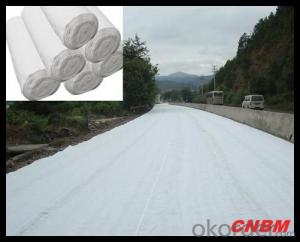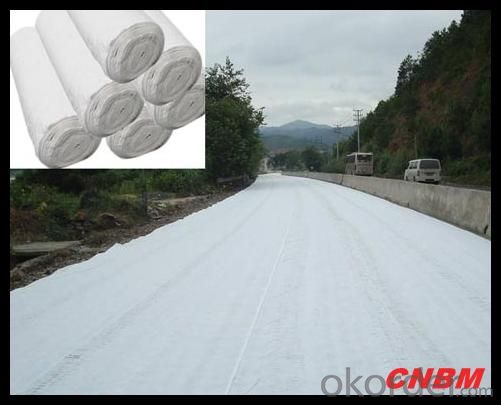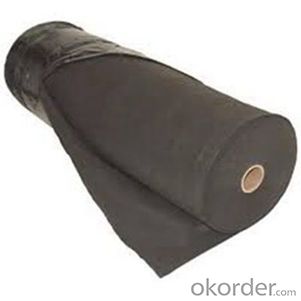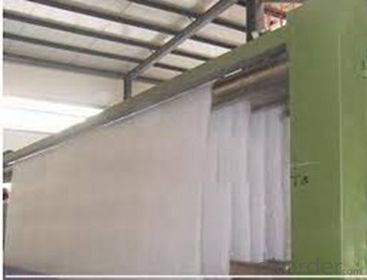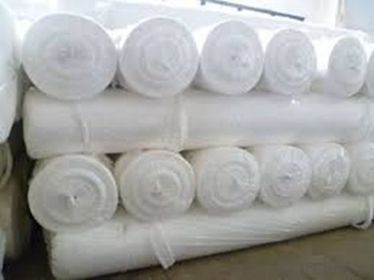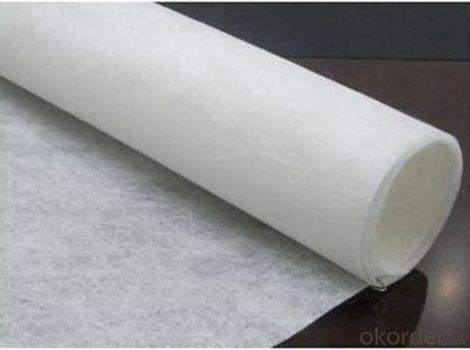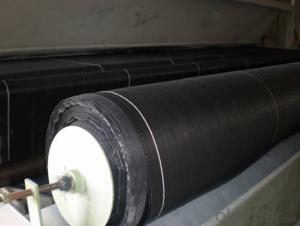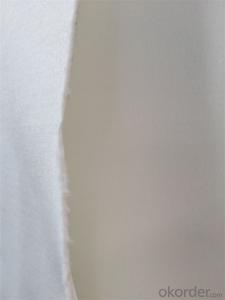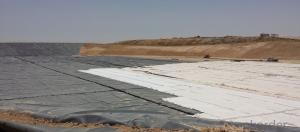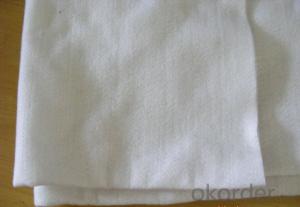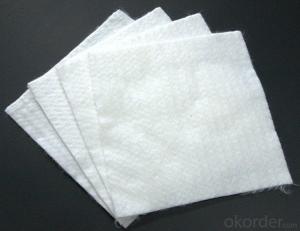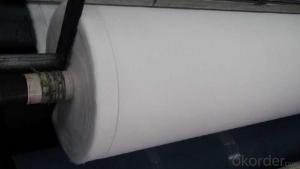Nahee Geotextile Non Woven Geotextile with Mat / Short Fiber / Needle Punched
- Loading Port:
- China main port
- Payment Terms:
- TT OR LC
- Min Order Qty:
- 3000 m²
- Supply Capability:
- 1000000 m²/month
OKorder Service Pledge
OKorder Financial Service
You Might Also Like
Specification
Specifications
1. Made of HDPE
2. Will not rust, rot, can be washed conveniently
3.Can bear weight up to 60 tons.

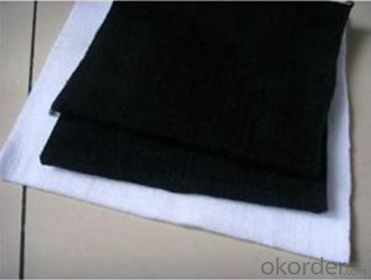
Packaging & Shipping
Packing: PLASTIC FILM INSIDE, AND WOVEN BAG OUTSIDE
Shipping: About 15 days after receipt the deposit
geotextile fabric
permeability,filtration,easy for construction
ISO and CE certificate
Good quality and competitive price
Our Service
Quality assurance
1.On a regular basis or as per your request,we entrust national testing agencies to conduct quality inspections
2. Strictly in accordance with the ISO9001-2008 international quality system standard,we monitor and manage the whole process throughout production,quality testing,and measurement to ensure product quality
3. For quality-related construction delay or substandard construction(except for damage or losses due to customer’s responsibility or irresistible natural disasters),we have refunding,replacement,and repair services.We will respond to customers’ feedbacks on quality issues within 24 hours.
After-sales service
1.In order to provide customers with comprehensive technical support,we will provide technical and other related information upon request in a timely manner.
2.In required,we will appoint specialized technicians to the construction site to give technical trainings to construction people,and offer technical guidance throughout the whole construction process.
3.For damage due to shipment and delivery,after we receive the complaint,we will check the issure through provided pictures and videos.If our responsibility is confirmed,we wil offer free replacement.
4.When the construction is completed,as your request,our technical staff may participate in the final acceptance.
FAQ:
Q: What kind of payments does jenor support?
A: T/T, L/C, Cash are accepted.
Q: Do you charge for the samples?
A: Accordeing to our company policy, the samples are free, we only charge the freight fee. And we will return the freight fee during the next order.
Q: Can you produce according to customers' design?
A: Sure, we are professional manufacturer, OEM and ODM are both welcome.
Q: Do you have other products?
A: Yes, please check the pictures:
- Q: What are the specifications for geotextiles in subsurface drainage projects?
- The specifications for geotextiles in subsurface drainage projects typically include factors such as the material type, weight, thickness, and permeability. These specifications ensure that the geotextile is capable of effectively filtering water and preventing soil particles from clogging the drainage system. Additionally, the specifications may outline requirements for strength, durability, and UV resistance to ensure the geotextile can withstand the environmental conditions in the subsurface drainage projects.
- Q: What are the cost considerations for geotextile applications?
- Some cost considerations for geotextile applications include the initial purchase cost of the geotextile material, the cost of installation, and any additional costs associated with site preparation and maintenance. Other factors such as the size and complexity of the project, the type and quality of the geotextile material, and the expected longevity of the application also contribute to the overall cost. Additionally, the potential cost savings from using geotextiles, such as reduced construction time and improved long-term performance, should also be taken into account.
- Q: What are the key factors affecting the permeability of geotextiles?
- The key factors affecting the permeability of geotextiles include the type and thickness of the geotextile material, the porosity of the material, the size and distribution of the pores within the material, the hydraulic gradient or pressure difference across the geotextile, and the presence of any clogging or fouling agents that can block the pores. Additionally, the compatibility between the geotextile material and the surrounding soil or fluid can also influence its permeability.
- Q: How to apply geotextile soil
- General geotextile cloth in the drainage layer above the geotextile covered with soil
- Q: Geotextile how to construction?
- There are specialized construction teams
- Q: Can geotextiles be used in erosion control on riverbanks?
- Yes, geotextiles can be used in erosion control on riverbanks. Geotextiles are permeable fabrics that can be placed on the surface of the riverbank to stabilize the soil and prevent erosion. They help in retaining soil particles while allowing water to pass through, thereby reducing the impact of flowing water on the riverbank and preventing further erosion.
- Q: Geotextile a square meter how much money
- Geotextile, also known as geotextile, it is made of synthetic fiber through acupuncture or woven from the permeability of geosynthetics. Geotextile is a new material geosynthetics which one, the finished product for the cloth, the general width of 4-6 meters, the length of 50-100 meters. Geotextile is divided into a spinning geotextile and non-woven filament geotextile. The price should be based on the specifications per square meter, for example: 200g per square meter geotextile price of about 1.8 yuan
- Q: Are geotextiles resistant to creep deformation?
- Yes, geotextiles are generally resistant to creep deformation. They are designed to have low deformation properties under constant or sustained loads, making them effective in preventing or minimizing creep.
- Q: What are the installation techniques for geotextiles?
- There are several installation techniques for geotextiles, depending on the specific application and requirements. Some common techniques include trenching, anchoring, and overlaying. Trenching involves excavating a trench and placing the geotextile in the desired location, then backfilling the trench with soil or aggregate. Anchoring involves securing the geotextile to the ground using stakes or anchors, providing stability and preventing movement. Overlaying involves placing the geotextile on top of an existing surface, such as a road or landfill, to provide reinforcement and separation. The choice of installation technique depends on factors such as soil conditions, project specifications, and desired results.
Send your message to us
Nahee Geotextile Non Woven Geotextile with Mat / Short Fiber / Needle Punched
- Loading Port:
- China main port
- Payment Terms:
- TT OR LC
- Min Order Qty:
- 3000 m²
- Supply Capability:
- 1000000 m²/month
OKorder Service Pledge
OKorder Financial Service
Similar products
Hot products
Hot Searches
Related keywords
